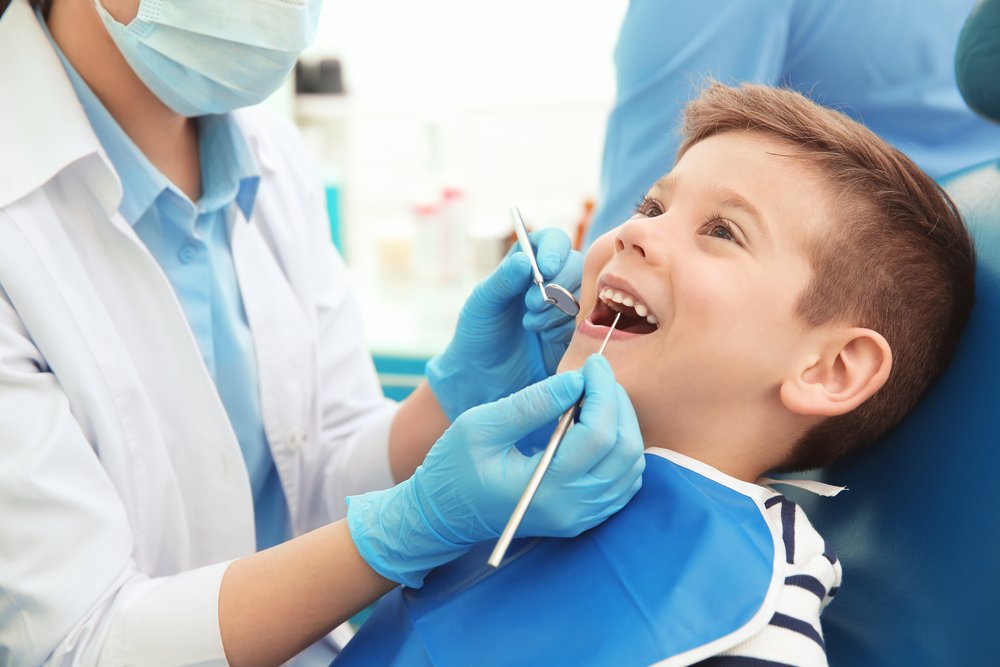Athena Skin Hair & Dental Clinic
Pediatric Dentistry

What is Pediatric Dentistry
Common Pediatric Dental Treatments
Pediatric dentistry covers a wide range of treatments aimed at preventing and treating dental issues in children. Some common treatments include:
Dental Examinations and Cleanings – Regular check-ups and cleanings help maintain oral health and prevent cavities.
Fluoride Treatment – Strengthens tooth enamel and helps prevent tooth decay.
Dental Sealants – Thin coatings applied to the chewing surfaces of molars to prevent cavities.
Cavity Fillings – Restorative treatments for decayed teeth using composite fillings.
Space Maintainers – Devices used to keep space open for permanent teeth when a baby tooth is lost too early.
Orthodontic Evaluations – Assessing the alignment of teeth and jaw to detect early orthodontic needs.
Pulp Therapy (Pulpotomy/Pulpectomy) – Also known as a “baby root canal,” this treats infected or damaged tooth pulp.
Tooth Extractions – Removal of severely decayed or damaged teeth when necessary.
Emergency Dental Care – Treatment for dental injuries, knocked-out teeth, or sudden tooth pain.
Habit Counseling – Guidance to help children stop thumb sucking or pacifier use that may impact dental development.
Causes of Pediatric Dental Issues
Children may face several dental issues due to various factors, including:
Poor oral hygiene leading to plaque buildup and cavities.
High sugar consumption from sweets, juices, and soda.
Thumb sucking and prolonged pacifier use affecting tooth alignment.
Irregular dental visits leading to undetected dental problems.
Lack of fluoride exposure resulting in weak enamel.
Dental injuries from sports or falls.
Genetics that may predispose children to certain dental issues.
Symptoms of Pediatric Dental Problems
Recognizing dental issues early is crucial. Some common symptoms include:
Toothache or sensitivity to hot and cold foods.
Visible cavities or white/brown spots on teeth.
Swollen, red, or bleeding gums.
Bad breath that persists despite brushing.
Loose or misaligned teeth.
Difficulty chewing or speaking.
Pain or discomfort in the jaw.
Prevention of Pediatric Dental Issues
Preventive care is the best approach to maintaining a child’s oral health. Parents can follow these steps to help prevent dental problems:
Encourage Proper Oral Hygiene: Teach children to brush twice a day with fluoride toothpaste and floss daily.
Limit Sugary Foods and Drinks: Reduce the intake of candies, sodas, and processed snacks.
Regular Dental Check-ups: Schedule visits to the dentist every six months for routine exams and cleanings.
Use Dental Sealants and Fluoride Treatments: Protect children’s teeth from decay with preventive treatments.
Encourage a Healthy Diet: Include fruits, vegetables, dairy products, and calcium-rich foods to strengthen teeth.
Use Mouthguards for Sports: Prevent dental injuries with protective mouth gear.
Break Harmful Habits: Discourage thumb sucking, nail biting, and prolonged bottle feeding.
Recovery After Pediatric Dental Procedures
Recovery after dental treatments varies depending on the procedure:
After Fillings or Sealants: Mild sensitivity may occur for a day but will subside quickly.
After Tooth Extractions: Some soreness and swelling are normal; follow dentist’s aftercare instructions.
After Pulp Therapy: Discomfort may last for a few days; soft foods and pain relievers may help.
After Orthodontic Adjustments: Children may experience soreness but will adjust within a few days.
Parents should monitor their child’s oral health post-treatment and follow the dentist’s guidance to ensure a smooth recovery.
Possible Complications
Dry Socket: When the blood clot dislodges, causing severe pain and delayed healing.
Infection: Symptoms include fever, pus, and persistent pain.
Nerve Damage: Rare but possible if nearby nerves are affected.
Excessive Bleeding: May require additional medical attention.
